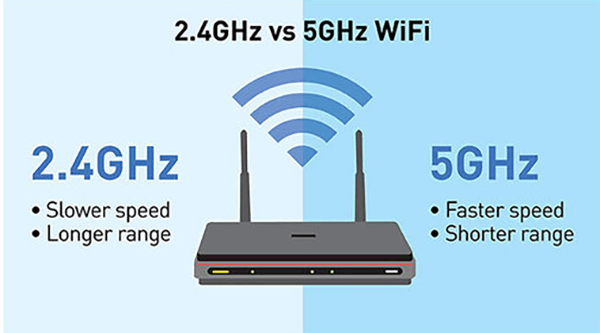How to Boost Your Wi-Fi Signal

Nowadays, it’s vital for many of us to get online for our day-to-day activities, so slow internet speed can be maddening. Even if getting online isn’t a matter of life and death, no one likes a bad Wi-Fi signal. Thankfully, in most cases, this issue can be easily resolved.
If your internet connection is slacking, we’ve got your back. In this guide, you’ll find multiple methods of boosting your Wi-Fi signal. Additionally, we’ll answer the most common questions on the topic.
Determine Your Wired Internet Connection Speed
People experiencing connection issues often blame their Wi-Fi when the actual root of the issue lies in their wired internet. To find out your wired internet connection speed, follow the steps below:
- Find the Ethernet cable connected to your router.
- Plug the cable directly into your laptop or PC. If your computer doesn’t have an Ethernet port, you may need to get a USB to Ethernet adapter.
- Run an internet speed test. This can be done using numerous online tools, such as Fast.com or PCMag Speed Tester. You can even google “speed test,” and the browser will open the tool in the results.
If the test result doesn’t match your Wi-Fi signal speed, you may need to replace your router or upgrade your data plan. For instance, your Ethernet cable may provide a speed of 800Mbps, but if you’re subscribed to a 3Mbps plan, you won’t get Wi-Fi any faster than that. In other cases, your router may be outdated or have a low-speed limit. For example, a router capped at 100Mbps will never provide a 700Mbps Wi-Fi signal.
Update Your Router Firmware
If your router speed limit and data plan are adequate, the problem may lie in your router’s firmware. Manufacturers are regularly issuing updates to ensure the best router performance. The process instructions differ depending on your router model.
With most modern devices, all you need to do is press one button in the administration panel. With older routers, you may have to visit the manufacturer’s website, download the firmware update file, and manually upload it to the router’s administration page. We’ve covered the instructions for TP-Link routers in this guide.
Check Your Wi-Fi Frequency
Dual-band routers can run on either a 2.4GHz or 5GHz bandwidth frequency. You can check your current Wi-Fi frequency in your router’s administration panel. Generally, the 5GHz frequency offers higher speeds but is less stable. On the other hand, the 2.4GHz band is slower but better at handling obstructions and long distances. Try switching the settings to determine the optimal frequency.

Improve Router Placement
Not every place in your house is equally good for your router. Metal objects may disrupt the Wi-Fi signal, so you want to move your router as far away as possible from such obstructions. Bear in mind that they aren’t always obvious – for example, some houses may have metal studs in the floorboards.
Some household appliances may affect your Wi-Fi signal, too. Keep your router away from stoves, dishwashers, microwave ovens, washing machines, and other appliances emitting an electromagnetic signal. Overall, strive to keep the router at a safe distance from bundles of electric wires.
Lastly, your Wi-Fi signal radiates in all directions rather than only horizontally. If you have a multiple-story house, try to place your router near the first floor’s ceiling to ensure a strong signal on the second floor. Even if you live in a one-story apartment, don’t place your router on the floor – put it on a shelf.
Upgrade the Router’s Antenna
Many routers are sold with weak antennas that don’t offer the best possible performance. The reason for this isn’t necessarily manufacturer greediness but often because powerful antennas can be hideously large. If you place greater importance on the Wi-Fi speed rather than your router’s appearance, consider purchasing a stronger antenna. Make sure it has more gain than your router’s stock antenna. Most residential routers are sold with 4-5 decibel antennas, so you will need at least a 9-decibel antenna.
Get a Wi-Fi Range Extender
Sometimes, your router’s Wi-Fi range may not be sufficient to cover your entire home. This is especially relevant for older router models, but even new devices have limits. If none of the above-mentioned tips had an effect, chances are your house is simply too large for your router to handle. In this case, consider getting a Wi-Fi range extender or a mesh Wi-Fi system.
Wi-Fi range extenders receive an internet signal from your main router and transmit it to other devices in your home. Mesh Wi-Fi systems will replace your current router entirely. Each unit in the system is an independent device that connects with others to intelligently route internet traffic into every corner of your house. Make sure to follow the router placement rules when setting up your Wi-Fi range extender or Wi-Fi mesh system.

Apart from Wi-Fi range extenders and mesh systems, there are also signal boosters and repeaters. Boosters connect to your router to enhance the signal, while repeaters serve as additional routers that broadcast the signal into other rooms. We’ve covered the differences between Wi-Fi boosters, repeaters, and extenders in detail in this guide.
Keep Your Router Up to Date
Hopefully, our tips have helped you boost your Wi-Fi signal and achieve a stable connection. Don’t forget to regularly update your router firmware and keep your hardware up to date. Sometimes, a small upgrade can make a big difference.
















